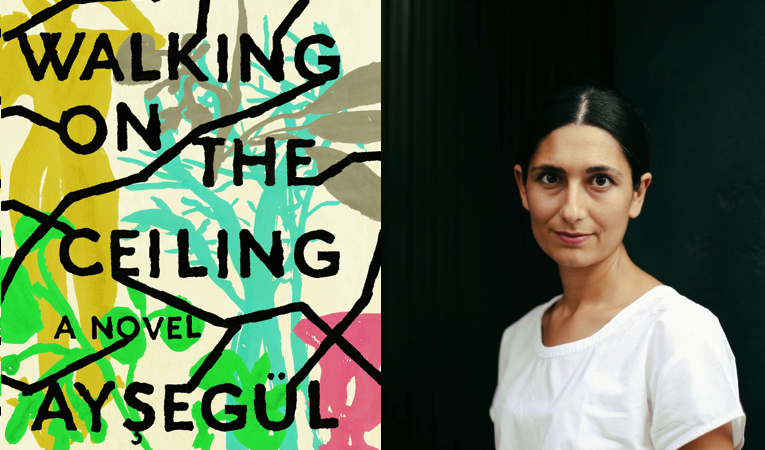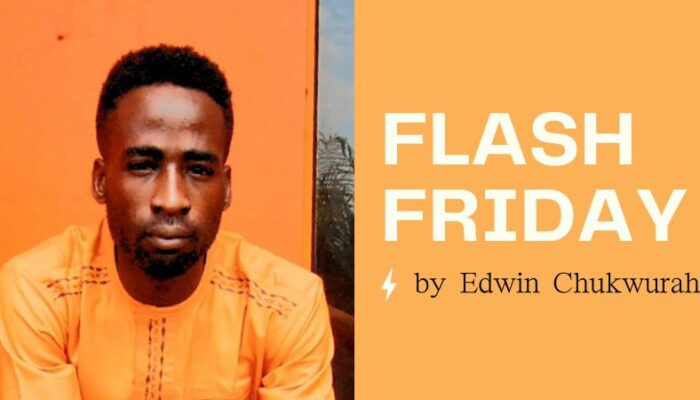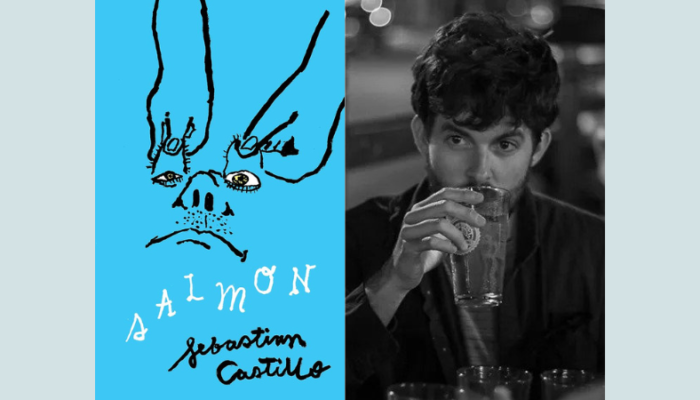An Interview with Ayşegül Savaş
There is a deeply felt anxiety in Ayşegül Savaş’s debut novel, Walking on the Ceiling,that asks, what happens to a story if it is not told? Will it lose form or shape? Will the story disappear, or emerge in someone else entirely? In delicate, precise prose, Ayşegül Savaş unbraids these intricate questions about storytelling, identity, and memory through her elusive narrator, Nunu. Writing from a present-day Istanbul, Nunu pieces together her traumatic childhood, her complicated relationship with her mother, and recalls her time spent in Paris, where she met M., a novelist she admires. But as Nunu begins to tell M. her stories, the reader and writer relationship conflates, and Nunu is left feeling like she has told not one true story about herself.
What happens to Nunu and M. happened to me as I read Walking on the Ceiling. When I read that “women had invisible pantries of wisdom for losing weight, for varicose veins, for reducing cellulite,” my head filled with Turkish relatives of my own, and I was confused for a moment. Was this someone else’s story or my story? Was this novel affecting the story I told myself about myself? Is every relationship between reader and writer based on an “invisible thread” that links identity and memory?
Ayşegül and I spoke about the intangible nature of storytelling, Istanbul travelogues by Western writers, the process of writing a first novel, and much more. I’m inclined to believe, like Nunu, that our conversation is only just beginning, and I’m thrilled for readers to step into the powerful and immensely wise world of Ayşegül Savaş.
—Mina Seçkin, Managing Editor
Mina Seçkin: When I reached out to you a few weeks ago, you wrote that hearing from a reader resembles a form of magic, or telepathy. I was struck by this, and couldn’t help but think of Walking on the Ceiling’s narrator, Nunu, and M. What does this relationship between reader and writer mean to you?
Ayşegül Savaş: It’s a very intimate relationship, all the more so because it’s invisible. When I read a book, I inevitably bring my own meaning to the text, highlighting certain parts and overlooking others, building whole fictions of my own from the smallest details. Connecting with a book often feels like an imaginary conversation with its author, which continues long after I finish the book, taking on a life of its own. The authors become my friends, making up a chorus of voices in my head.
When Nunu meets M. in Paris, she already has an imaginary relationship with him from reading his Istanbul novels. She feels that M. understands her city in a unique way and therefore has certain expectations from him from the very start.
MS: You explore this relationship between the invisible and visible, as well as the imaginary and real, throughout your novel, and it makes me wonder: is Nunu’s impulse to tell M. her own stories—as well as our impulse as writers or as people to tell any story—inspired by an inherent desire to make that which is invisible more visible? Or that which is imaginary more real? Or is the urge to tell a story rooted in something else?
AS: Part of Nunu’s desire, when she tells her stories to M., is to preserve her mother in an idyllic light. She wants M., as well as the reader, to bear witness to her mother’s vanished existence. She refers to her narrative as an “inventory”, which is a very tangible definition of something intangible. She sets out to list all the things she remembers, in order to come to terms with her past. She isn’t always good at facing her emotions, but she can let them emerge, by making simple, concrete lists.
MS: You emphasize the essential non-physicality of a story often in Walking on the Ceiling. I was especially struck by the line, “But stories are reckless things, blind to everything but their own shape. When you tell a story, you set out to leave so much behind.” Can stories hold a shape? Are they tangible?
AS: Stories get solidified in their telling and re-telling. I think that the very attempt of turning an experience into a story means getting rid of many nuances and uncertainties that exist within it. With each telling, the murkiness of life begins to fade, giving way to the distinct shape of the story’s cause and effect.
A story is a very selfish organism, constantly focused on its own survival and evolution. Whatever does not fit its needs—its particular arc or plot—is left behind.
MS: Did you feel you, as the author, ultimately had to “set out to leave so much behind” in writing this novel?
AS: Yes! So much! Perhaps this has to do with writing a first novel. I wanted to fit the whole world into this book: every anecdote and observation and landscape. Earlier drafts were filled with strange historical anomalies and family histories, and lists of objects. When the book began to settle into its current shape, I had to let go of many of the things that fascinated me, that I’d spent weeks researching and writing.
MS: Wow. I’ve only just come to terms with the fact that I’d been trying to stuff everything I found fascinating into my own first novel. What were the scenes, or list of objects, most difficult to let go of? And how did you know it would not fit or serve your novel?
AS: There was a long part about a group of revolutionary Turkish artists living in Paris in the 50’s, who met regularly to drink and talk and quarrel and write manifestos. I even wrote some of their poems and manifestos but I had a feeling, the whole time I was working on this section, that I couldn’t pull it off; it all sounded made up. I wondered whether I should do more research—I was already reading the letters of Turkish artists from that era— and deepen the characters, but the thought of this was daunting. It was such a relief to take it all out instead! All that remains of that section is the one line from the poem “The Invention of Midnight”.
There were many other parts that were easier to take out rather than develop, such as Nunu’s last visit to her mother’s hometown. This chapter was a list of all the remaining furniture and objects in the abandoned house. It was heavy-handed in its suggestion of loss and inventory. It resembled the rest of the book too much and having one more scene to remind the reader of it felt unnecessary. But I loved all the items on the list and some of them made their way into other sections.
MS: What was the hardest thing to overcome in writing a first novel, and what advice would you give aspiring writers?
AS: For me, the hardest was to continue writing beyond the first draft. I had written a complete book and I thought I should be done already. I knew that the draft wasn’t fully developed and very messy but I was tired and just wanted an agent to tell me they liked it. That didn’t happen. I had to continue revising, to go back to all those messy parts and tackle them on my own. I took out most of that book and rewrote it almost from scratch. Until then, I’d never truly revised my work beyond making superficial changes.
My advice would be to keep going, sentence by sentence, at that point when you can’t be bothered to continue because what you’ve made feels like a big, shapeless tangle. Trust that the shape of a work emerges in this manner—cutting out and smoothing, cutting out and smoothing— though it certainly takes time.
MS: Do you have any writing rituals that help you tackle this shapeless tangle?
AS: When I was generating new material, I kept to a daily word count (500). When I was revising, my rule was to work on it every day. For me, the most effective way to revise is admitting to myself what part weighs on me the most—what I can’t bear to revise—and cut it all out. Then I see what I have left and how I can go from there.
I also work well with deadlines and would make up small celebrations for meeting them. (Going out to dinner at a brewery across the city was a favorite.) In this way, the long and lonely process of writing a novel was also a very joyful one, dotted with celebrations.
MS: What books have most influenced your work?
AS: I read many books by Patrick Modiano while I was writing the novel. His Paris landscapes are blurred by the characters’ inability to remember or come to terms with their pasts. Georgi Gospodinov’s Physics of Sorrow had a big influence on the way I thought about the pang of loss—the impossibility of containing the past in writing, and the mad effort to try and do so in the form of an inventory. So, too, did Enrique Vila-Matas’s Never Any End to Paris, which is a book filled with many walks, and writers, and conversations.
For a long time, my novel was in the form of a letter from Nunu to M. I often turned to Yourcenar’s Memoirs of Hadrian, where the emperor’s address—My Dear Mark—is just an excuse to recount. When I decided to change the novel to a simple first person and break up the monotonous flow of the letter, Elizabeth Strout’s My Name is Lucy Barton helped me envision the book as a series of short, accumulating narratives—what Strout calls “handprints” on glass. I also learned many lessons in directness from the work of Annie Ernaux.
And then there are the writers who have largely formed my imagination, with whom I am always in conversation. W.G Sebald, Alice Munro, Orhan Pamuk, Virginia Woolf, William Trevor, Kazuo Ishiguro, Natsume Soseki.
MS: What are some of those lessons in directness that you learned from Annie Ernaux?
AS: I was reading La Place in the midst of finishing a draft and wondering what I could add about Nunu that was different from the ways I’d already portrayed her. La Place is about Ernaux’s father’s death, her return to her parents’ home, and the years between her childhood and her return in which she became a different social class than her parents. I found this a very delicate, very painful subject and was amazed by the way Ernaux handles it directly, without philosophizing or analyzing too much. I was grateful to her for trusting her reader’s capacity to understand complex emotions without belaboring them. (Something that strikes me in the work of Natalia Ginzburg and Deborah Levy as well.)
Around this time, I started writing the chapter about Nunu’s college roommate, Molly. Even though Molly’s world is very different from that of Ernaux, she is the most open character in the book, partly because Nunu describes her frankly and briefly; this is one of Ernaux’s direct influences on my writing.
MS: I loved how Nunu grapples with how M., a non-Istanbullu, writes about Istanbul in his fiction. Can you speak to the clichéd, Western perspective of Istanbul (“the bridge between East and West”), and how this history of travel writing shaped what you wanted to instead write?
AS: It’s funny you ask about travel writing. I was teaching a class on Istanbul travelogues from the 16th century onwards while writing the first draft. Flemish, French, English, American travelers who described the city with great poetry but with the repeated exoticisms of ghosts and hauntings, contrasted with bustling markets and minarets and all that. These clichés can be very pervasive; they even begin to seep into how one thinks of their own city. The idea of “a bridge between East and West” is particularly sticky because there happens to be bridges between Istanbul’s two continents and the city is of course layered with many cultures and empires. But this idea has been repeated so often that it’s become stale and limits one’s vision through a very rigid, binary perspective. I was tremendously bored with these notions of Istanbul and read a lot of Turkish noir fiction to clear my palette of the Western travelogues! Still, a city that’s been so perfectly mummified in clichés can be difficult to see afresh. Some of these clichés resurface in the novel’s non-Istanbullu characters.
MS: Oh, wow. I’ve read some of these travelogues, and it is frustrating how much staying power they seem to have throughout the years. I think Mark Twain wrote about going to a hamam? Maybe Hemingway discovered “the magic of the East”?
AS: Exactly. And having read and heard so many of these images, one can’t help paying attention to, or singling out those very images during their own visit to a city, even if it is for the first time. Not that what they see is a lie, necessarily, but it crops out so much.
MS: Your novel effectively pushes back on such pervasive clichés. Are there other novels, films, or pieces of art that you think work towards this same de-mummification of a city like Istanbul?
AS: I think that de-mummification comes from the artists living in a city and actively engaging with it—not necessarily making work about the city itself, but art that’s shaped by the city’s particularities, that is born from its rhythms and textures.
This is something my work can’t fully achieve, since I’m writing in English and away from Istanbul. I think that the city I write about might appear too abstract, even foreign, to an Istanbullu audience.
MS: Nunu’s mother was fascinating, and I loved how she subverted the norm for some Turkish women. How was this character developed?
AS: In its earliest form, the novel was focused primarily on Nunu’s father and his childhood years in Paris. There was a short scene tucked in there about Nunu’s mother and their “silence game”. This was something I came up with to address how a child might deal with trauma and try to make sense of the world around her. One of my early readers remarked that this short part felt a lot more alive than the long history of the father. So I began expanding the mother-daughter relationship, trying to see it from different angles, because I didn’t quite know what to make of it. Was Nejla a bad mother? Or just an unusual one? Nunu tells the story of her mother in many ways: as an abusive parent, a best friend, an eccentric, a woman full of life and unfulfilled dreams. She is fascinated by the idea of her mother as a young woman, utterly unlike the person that raised her. I guess there is some truth to all these characters even if there isn’t a single true version. Nor do I think that there is a norm for Turkish women, at least not once you step closer and consider them as individuals with complex and contradicting personalities.
MS: What are you working on now?
AS: I’m working on a collection of essays about the imagination, creativity, and writing. I’m also working on a novel about a painter.
MS: Given your thoughts on the relationship between reader and writer, I’m eager to read your take on the painter/viewer relationship.
AS: It’s a very different relationship, not at all like the conversation between author and reader. Certainly, it has to do with the fact that a painting is not a verbal medium, but engrosses the viewer in a similar way; it enables entry into a different world. Even though the book is mostly realistic, I’m enjoying exploring this idea of a painting as a portal into different dimensions.
MS: What do you hope readers will leave your book having either experienced or learned?
AS: I hope they experience the joy of conversation and of walking aimlessly in a city! I hope, too, that the book speaks to readers’ own inventories of the past and all the invisible items they contain.
Ayşegül Savaş grew up in Turkey and Denmark. Her work has appeared in The Paris Review, Guernica, and elsewhere, and was shortlisted for the Glimmer Train Fiction Prize and the Graywolf Emerging Writers Award. She has an MFA from the University of San Francisco. She teaches at the Sorbonne and lives in Paris.
Mina Seçkin is a writer from New York City. She serves as managing editor of Apogee Journal, works in the New Yorker’s fiction department, and recently completed her MFA at Columbia University’s School of the Arts, where she received a Felipe De Alba fellowship. Her writing has been published in McSweeney’s Quarterly Concern, The Adroit Journal, and elsewhere. She is currently working on her first novel.




